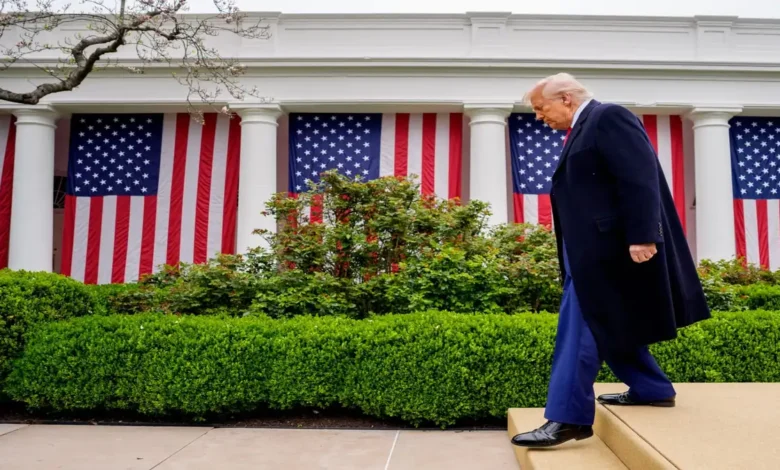China Tariffs: Understanding the Economic Impacts and Global Implications1

China Tariffs The topic of China tariffs has dominated global economic discussions for the past few years. These tariffs, imposed by China or on Chinese goods, have played a crucial role in shaping the modern international trade landscape. With the rise of China as a global economic powerhouse, its trade policies, including tariff decisions, have had far-reaching effects not only on the country’s economy but also on the global markets, industries, and everyday consumers.
China, being one of the world’s largest manufacturers and exporters, has had a significant influence on global trade. The tariffs imposed by and on China are a direct result of various geopolitical and economic factors. From the ongoing trade tensions between China and other countries to the broader implications for global supply chains, understanding China tariffs is critical for businesses, governments, and consumers alike.
In this article, we will explore the origins and evolution of China tariffs, their impact on both domestic and international economies, and the strategic decisions behind these tariffs. Additionally, we will discuss the long-term consequences and the role of tariffs in the future of global trade.
The Origins of China Tariffs
The history of China’s tariffs dates back to the early days of the People’s Republic of China when the country’s economic policies were strictly controlled by the government. In the 1980s and 1990s, China began its transition from a closed, centrally-planned economy to a more open, market-driven one, and this led to its integration into the global trading system. As China opened up to international trade, tariffs on imported goods were adjusted to encourage economic growth and attract foreign investment.
However, China’s approach to tariffs has not always been straightforward. Throughout the years, the country has implemented various tariff structures to balance its domestic economic goals with its desire to participate in global trade. Over time, China’s tariffs became a subject of negotiation in trade agreements, especially as the country’s manufacturing capacity and export strength grew.
The country’s entry into the World Trade Organization (WTO) in 2001 marked a turning point, as it required China to reduce tariffs on a wide range of goods. Despite this, China maintained control over certain strategic industries by imposing higher tariffs on specific sectors, such as automotive and agricultural products. These decisions have been both strategic and reactive, often driven by the global economic landscape and domestic priorities.
The Role of Tariffs in China’s Economic Strategy
Tariffs have been an essential tool in China’s broader economic strategy. The country has used tariffs not only to protect its domestic industries but also to support the development of its key sectors. One of the primary goals of China’s tariff policy is to nurture local industries while simultaneously opening up to foreign markets. By imposing higher tariffs on imports, China has been able to encourage domestic production and reduce dependence on foreign goods.
China has also strategically employed tariffs to manage trade relations with other nations, especially during times of political or economic tension. For example, during the U.S.-China trade war, both countries imposed tariffs on each other’s goods in a tit-for-tat escalation. These tariffs were designed to protect domestic industries, leverage economic power, and extract political concessions.
Another aspect of China’s tariff policy is its use as a bargaining chip in international trade negotiations. The government has leveraged its tariff policies in trade discussions with other nations to secure favorable terms or protect its interests in key markets. Tariffs, in this sense, are not merely economic instruments; they are also tools of diplomacy and global positioning.
The Impact of China Tariffs on Global Trade
China’s tariff policies have had far-reaching implications for global trade. As one of the world’s largest economies, China’s trade decisions reverberate across international markets. Tariffs on Chinese goods can disrupt global supply chains, impact global pricing, and lead to shifts in trade relationships between countries.
One of the most significant impacts of China’s tariffs is on global supply chains. China is the world’s factory, producing a vast array of goods that are essential to industries worldwide. Tariffs can increase the cost of Chinese products, leading businesses in other countries to look for alternative suppliers. This often results in companies re-evaluating their sourcing strategies, which can lead to diversification or a shift in global production hubs.
Moreover, the imposition of tariffs can lead to price increases for consumers. Products manufactured in China and sold abroad often become more expensive due to the additional costs incurred from tariffs. These price hikes affect not only consumers but also businesses that rely on Chinese-made components or finished goods. The additional costs can be passed down the supply chain, impacting everything from electronics and automotive parts to clothing and household goods.
In addition to supply chain disruptions, China’s tariffs can also alter the dynamics of trade agreements. For example, in response to higher tariffs on Chinese exports, countries may seek new trade agreements to reduce their reliance on Chinese goods or attempt to negotiate better terms for their exports to China. These negotiations can lead to shifts in global trade alliances and trade flows, creating both opportunities and challenges for businesses and governments.

The U.S.-China Trade War: A Case Study of China Tariffs
One of the most notable and high-profile examples of China’s tariffs in recent history is the U.S.-China trade war, which began in 2018. During this period, both countries imposed tariffs on hundreds of billions of dollars worth of each other’s goods. The United States, under President Donald Trump, initiated the tariffs as part of a strategy to address trade imbalances and intellectual property concerns.
China retaliated by imposing tariffs on U.S. goods, including agricultural products, automobiles, and electronics. The trade war caused significant disruptions to global markets, with both countries experiencing reduced trade volumes, higher costs, and negative effects on various industries. The imposition of tariffs between the two largest economies in the world created uncertainty in global markets, affecting everything from stock prices to the prices of everyday goods.
While the U.S.-China trade war initially focused on trade imbalances, intellectual property issues, and market access, it quickly evolved into a broader geopolitical struggle. The trade war illustrated the power of tariffs as a tool of economic and political leverage. Even though a Phase One trade agreement was reached in 2020, the impact of the trade war continues to be felt today, with both countries still grappling with the fallout.
The Impact on Domestic Chinese Industries
While the global impact of China tariffs is often the focal point of discussions, it is equally important to consider the effects these tariffs have had on China’s domestic industries. On one hand, China has used tariffs as a way to protect and nurture its emerging industries, such as high-tech manufacturing and automotive production. On the other hand, the imposition of tariffs has also put pressure on certain sectors, particularly those that rely heavily on international markets.
Chinese exporters have been hit hard by the tariffs imposed by the United States and other countries. The increased costs associated with tariffs have made it more difficult for Chinese businesses to remain competitive in global markets. For example, industries such as electronics and textiles, which rely on international markets, have seen reduced demand for their goods due to higher tariffs.
Additionally, certain agricultural industries in China have been affected by tariffs. China is a major importer of agricultural products such as soybeans, pork, and corn. The U.S. tariffs on Chinese agricultural imports have led China to seek alternative suppliers, including countries in South America and other regions. While this has opened up new trade opportunities, it has also caused disruptions in domestic food supply chains and increased costs for Chinese consumers.
The Future of China Tariffs
As the global economic landscape continues to evolve, the future of China’s tariffs remains uncertain. While the U.S.-China trade war may have de-escalated in recent years, tariffs are still a key feature of China’s trade policy. The ongoing geopolitical rivalry between the U.S. and China, as well as China’s continued rise as a global superpower, will likely result in continued tariff negotiations and disputes.
China’s ongoing transition toward becoming a consumer-driven economy could also influence its tariff policies in the coming years. As China becomes less reliant on exports and focuses more on domestic consumption, tariffs may become less of a tool for economic growth and more of a means of protecting key industries and securing strategic geopolitical interests.
The role of China’s tariffs in global trade will continue to be shaped by a complex mix of economic, political, and diplomatic factors. The international community will need to adapt to the evolving dynamics of global trade, and businesses must remain agile in navigating the challenges posed by tariffs.
Conclusion: The Ever-Evolving Landscape of China Tariffs
In conclusion, China tariffs are a crucial element of the country’s economic strategy and global trade relations. These tariffs have wide-ranging implications, not only for China’s economy but for the global market, businesses, and consumers. Understanding the complex dynamics of tariffs, both imposed by and on China is essential for anyone looking to navigate the world of international trade.
As China continues to expand its influence on the global stage, tariffs will likely remain an important part of its economic toolkit. Whether used as a bargaining chip, a protective measure for domestic industries, or a means of exerting geopolitical influence, China’s tariff policies will continue to shape the future of global trade. For businesses, governments, and consumers alike, staying informed about China’s tariff policies is crucial for making informed decisions in an increasingly interconnected world.



